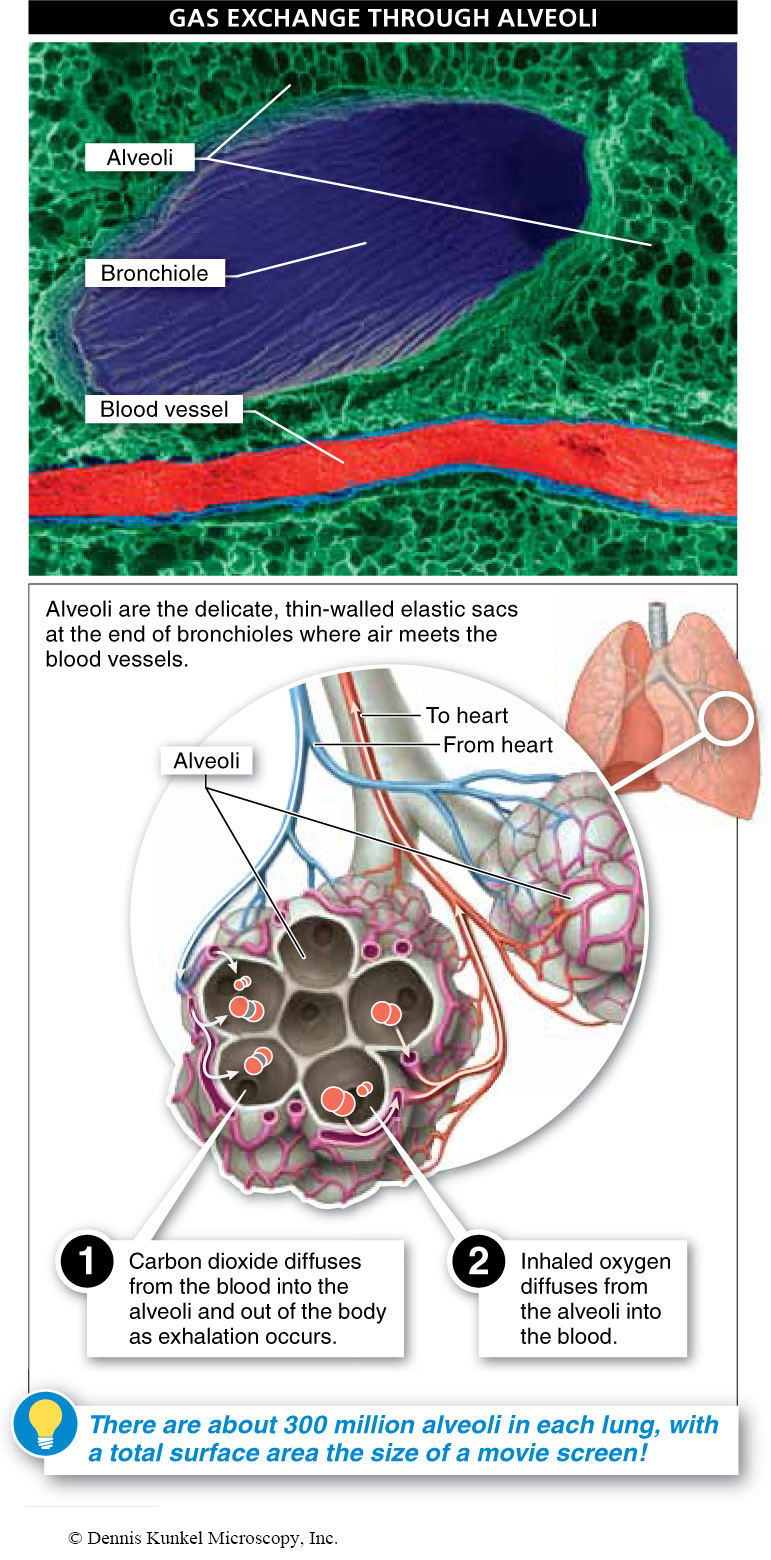Life on land is very different from life underwater, but the fundamental energetic needs remain. ATP is still the chemical that provides the energy for all the reactions necessary for life, and cells still need oxygen to produce ATP. Consequently, an organism must put air in contact with the cells that need it. Ultimately, oxygen must get into the cells and carbon dioxide must get out. These are universal challenges facing all terrestrial animals.
Terrestrial vertebrates have a general solution to these challenges. First, they suck in air through their mouth or nose. The air moves down a trachea into lungs. In the lungs, O2 diffuses from air to blood, while CO2 diffuses from blood to air. Finally, the oxygen-
Mammalian respiration begins with a deep breath. Let’s trace the air through the respiratory process in humans (FIGURE 21-33). Air enters through the nose, filling the nasal cavity, where it becomes warm and moist. Additional air can be taken in through the mouth. In either case, these two entry points for air join together at the throat (also called the pharynx), at the back of the mouth. The air passes through the throat and moves through the voice box, or vocal cords—


859
When the bronchi enter the lungs, which are like stretchy, elastic bags, they branch again. And again. And again. With each successive branching, the bronchi get smaller. Under a certain size they are called bronchioles. Eventually, the bronchioles reach a dead end. These dead ends are tiny elastic sacs, the alveoli, and it is here that the air meets the blood vessels (FIGURE 21-34).
There are about 300 million alveoli in each human lung, with a total surface area roughly the size of a movie screen. Alveoli are made up of the most delicate cells in our bodies and have ultra-
860
Amphibians and reptiles are almost identical to mammals when it comes to the respiratory system. The lungs of amphibians are a bit smaller in relation to body size, but amphibians make up for some of this reduced lung capacity by conducting a bit of gas exchange through their skin. This is why they must keep their skin moist at all times. Reptiles are generally too thick-
How does smoking damage the lungs? Can the damage be reversed?
Smoking introduces thousands of different chemicals into the respiratory system, many of which—
Although smoking is destructive in numerous ways—
TAKE-HOME MESSAGE 21.15
In terrestrial vertebrates, respiration begins as air is sucked in through the mouth or nose. The air moves down the trachea into lungs, where O2 diffuses from the air into capillaries and thus into the bloodstream, while CO2 diffuses from blood to air. Finally, the oxygen-
It is well known that carcinogens in tobacco smoke can lead to the development of cancer. Can you list two or three additional ways that smoking can damage or decrease the function of the respiratory system?
Answers may include any of the following: (1) Tobacco smoke can damage the cilia lining the trachea, reducing the ability to filter dirt and microorganisms from the air inhaled. (2) Chemicals in tobacco smoke can kill immune cells that help fight off infections. (3) Mucous secretions are triggered, which can lead to blocked airways and an increased incidence of respiratory infections. (4) Prolonged exposure may damage the walls of the alveoli, reducing respiratory capacity.